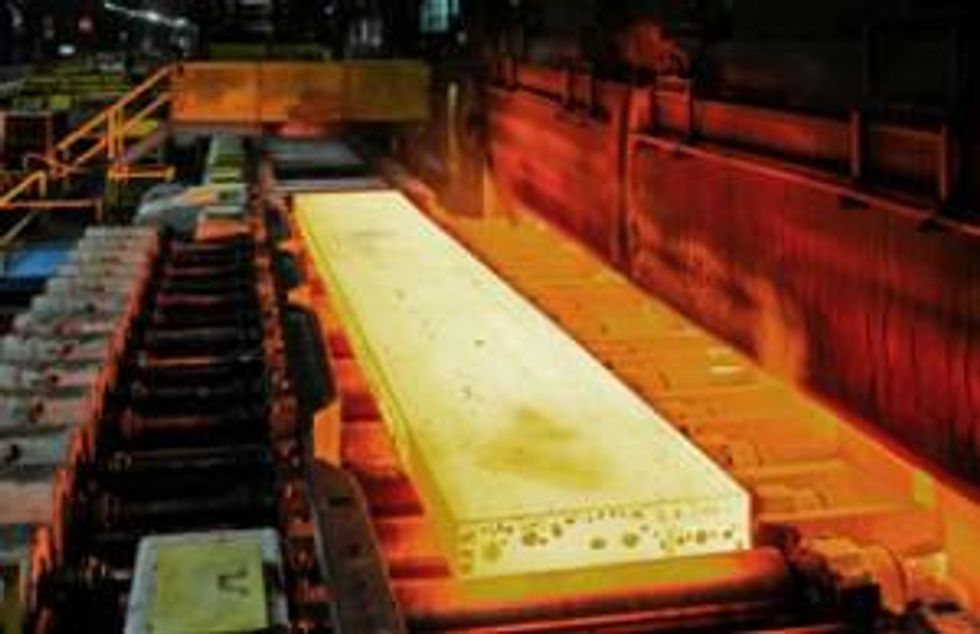- WORLD EDITIONAustraliaNorth AmericaWorld
Investing News NetworkYour trusted source for investing success
- Lithium Outlook
- Oil and Gas Outlook
- Gold Outlook Report
- Uranium Outlook
- Rare Earths Outlook
- All Outlook Reports
- Top Generative AI Stocks
- Top EV Stocks
- Biggest AI Companies
- Biggest Blockchain Stocks
- Biggest Cryptocurrency-mining Stocks
- Biggest Cybersecurity Companies
- Biggest Robotics Companies
- Biggest Social Media Companies
- Biggest Technology ETFs
- Artificial Intellgience ETFs
- Robotics ETFs
- Canadian Cryptocurrency ETFs
- Artificial Intelligence Outlook
- EV Outlook
- Cleantech Outlook
- Crypto Outlook
- Tech Outlook
- All Market Outlook Reports
- Cannabis Weekly Round-Up
- Top Alzheimer's Treatment Stocks
- Top Biotech Stocks
- Top Plant-based Food Stocks
- Biggest Cannabis Stocks
- Biggest Pharma Stocks
- Longevity Stocks to Watch
- Psychedelics Stocks to Watch
- Top Cobalt Stocks
- Small Biotech ETFs to Watch
- Top Life Science ETFs
- Biggest Pharmaceutical ETFs
- Life Science Outlook
- Biotech Outlook
- Cannabis Outlook
- Pharma Outlook
- Psychedelics Outlook
- All Market Outlook Reports
Strengthening demand in the Chinese steelmaking sector is shoring up the price of iron ore, according to recent media reports.
Strengthening demand in the Chinese steelmaking sector is shoring up the price of iron ore, according to recent media reports.
Last week Reuters reported that Baoshan Iron and Steel (SSE:600019), China’s largest steelmaker, sees iron ore at around $130 a metric ton (MT) this year alongside steady steel prices. Vale (NYSE:VALE), the world’s second-largest mining company, chipped in an estimated range of $110 to $160 a MT due to demand being bolstered by production of pig iron and direct-reduction iron, the news outlet said last Thursday.
Brazil-based Vale also issued a warning that if the price falls below the $110 floor, high-cost producers will be forced from the market. That, however, wouldn’t be such a bad thing for the price since that would reduce supply and thereby prevent any further price drop.
Iron ore with 62-percent iron content hit a 16-month high of $158.90 per MT in February, but prices have since slipped back on slowing global demand particularly in China, the world’s biggest consumer of the steelmaking commodity.
The picture for iron ore does appear to be brightening compared to six weeks ago, when Iron Investing News reported a more subdued outlook for the bulk commodity due to the growing role of scrap in Chinese steel production and ongoing investment in Chinese domestic iron-ore production. Import growth however appears to be countering the latter development.
Australia ramping up production
Platts reported that China’s March iron ore imports from Australia and Brazil, its two primary suppliers, are up. The country imported 32.17 million MT from Australia in March, a 12 percent gain year on year and a 27.5-percent increase compared to February. Australia’s export gains are happening at the expense of Brazil, China’s second biggest supplier. According to Platts, Brazil supplied just 11.7 million MT in March, a 4.7-percent decrease year on year and a 14-percent drop compared to April of 2012. Production issues in Brazil were cited as the reason for the decline.
Vale, for example, blamed operating and permitting problems for a 3.5-percent drop in production in the first quarter, the Wall Street Journal reported. The company’s Itabira complex saw a 17-percent quarterly decline due to lower-quality ore.
China’s production of crude steel rose 7 percent in March compared to February and that has boosted demand for iron ore especially from Australia, said Platts, quoting an iron ore trader.
“April is the peak period for construction activity in China and we are seeing more demand for mainstream iron ore from Australia as many mills are increasing their production to meet stronger demand.”
Australian producers are ramping up to meet that demand. As Iron Investing News reported on April 18, BHP Billiton (NYSE:BHP,ASX:BHP,LSE:BLT), Rio Tinto (NYSE:RIO,ASX:RIO,LSE:RIO) and Fortescue Metals Group (ASX:FMG) are sticking with plans to boost production despite softened prices. These three companies plan to add 235 million MT per year of new mine capacity by 2015, which is nearly equivalent to Rio Tinto’s 2012 output, according to Bloomberg.
Securities Disclosure: I, Andrew Topf, hold no investment interest in any of the companies mentioned.
Related reading:
Latest News
Investing News Network websites or approved third-party tools use cookies. Please refer to the cookie policy for collected data, privacy and GDPR compliance. By continuing to browse the site, you agree to our use of cookies.
